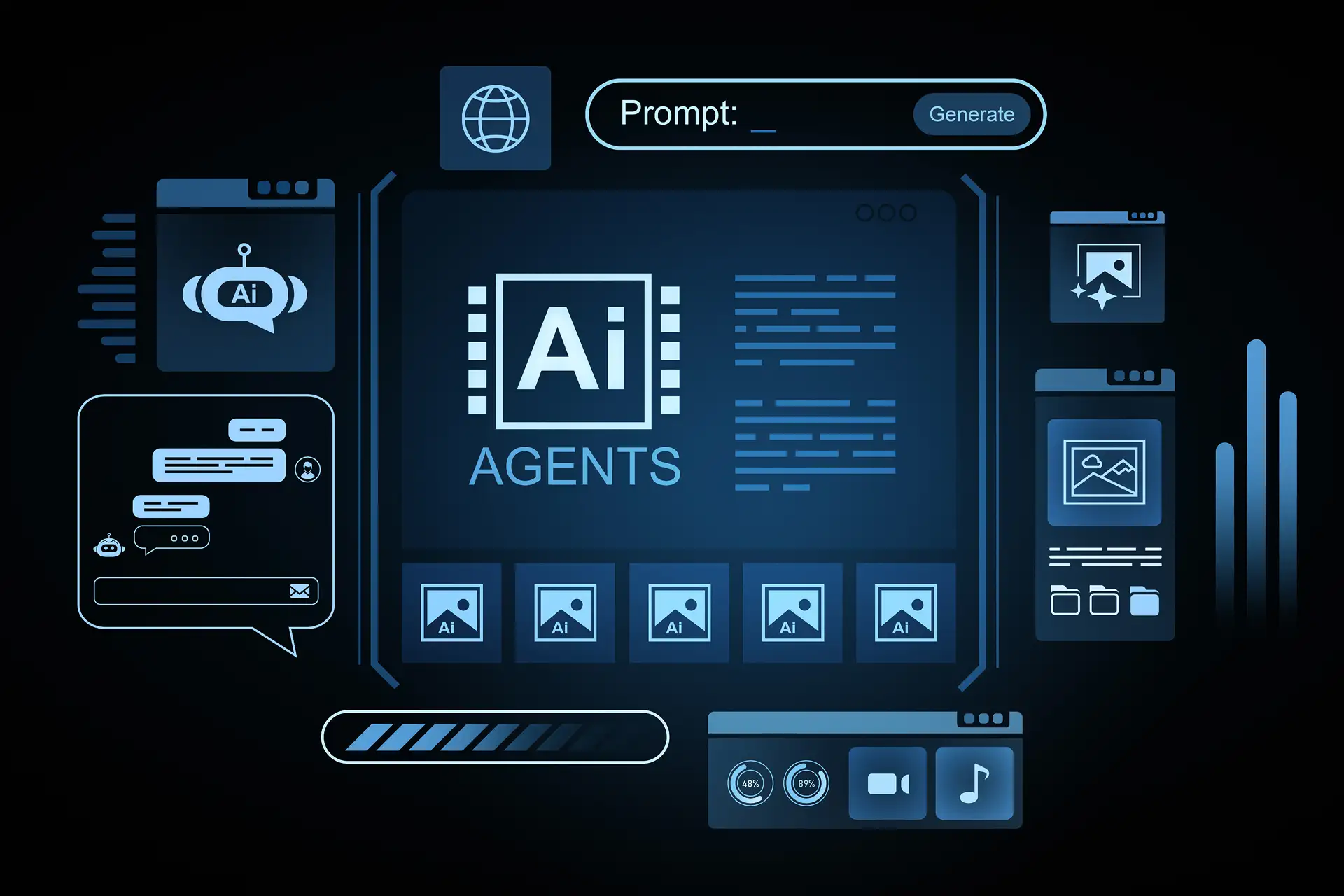Automation
Leveraging Analytics for Smarter Business Decisions

AI
Data has become one of the most powerful assets in modern business. Discover how to use analytics for better business insights.
Unveiling Key Insights
Data has become one of the most powerful assets in modern business. Yet many business owners still rely on gut feel, incomplete reports, or outdated spreadsheets to make critical decisions. The result is missed opportunities, wasted marketing spend, and strategies that lag behind more data-savvy competitors.
Leveraging analytics for smarter business decisions is not just about installing dashboards. Increasingly, it is about combining analytics with artificial intelligence to turn raw information into clear recommendations and timely actions. Used well, analytics and AI together help you decide what to do next with more confidence and less guesswork.
Reports from multiple sources show the significant impact. Harvard Business School Online has highlighted that data-driven decision-making is linked to higher productivity and profitability than intuition-led decision-making. Industry summaries of research from firms such as PwC and McKinsey note that data-driven organizations are more likely to acquire and retain customers and can be significantly more profitable than their peers. At the same time, 2025 overviews of analytics adoption show that many companies are now layering AI models on top of their data to automate analysis and prediction, not just reporting.
For business owners, the question is no longer whether analytics and AI matter; it's whether they matter. The real question is how to use them in a way that is understandable, actionable, and suited to the size and stage of your business.
Moving from “data rich and insight poor” to intelligent analytics
Most businesses are already generating plenty of data. Website visits, social media engagement, CRM entries, invoices, email campaigns, and support tickets all create digital traces. The challenge is that this information often resides in separate systems and is presented in formats that don't answer the questions you care about as an owner.
A 2025 review of data-driven decision-making statistics highlights a widespread problem. Organizations invest in analytics tools but remain “data rich and insight poor,” because they lack the time and skills to interpret everything. This is exactly where AI now plays a major role.
The modern analytics flow looks like this.
Data generation. Every customer and operational interaction generates data.
Data organization. Data is cleaned, standardized, and connected across tools, often with AI-assisted data matching and anomaly detection that finds errors faster than humans.
Insight creation. Instead of manually exploring every report, AI systems can scan large datasets, surface patterns, segment customers, and flag unusual trends without needing constant human direction.
Decision and action. Analytics and AI together provide clear indicators and, in some cases, recommendations such as which leads to contact first or which customers are at risk of churning.
Feedback and learning. As you act, new data feeds into your models, making AI-driven insights more accurate over time.
Many blogs stop at basic reporting. What they rarely emphasize is that AI can automate large parts of the analysis and monitoring process, so you are alerted to what matters rather than hunting through endless charts. This is the shift from passive analytics to intelligent analytics.
Why analytics and AI are now a competitive necessity
Several trends have turned analytics and AI into a necessity rather than a luxury.
First, the speed of change has increased. Markets and customer behavior move quickly. Waiting until the end of the quarter to see how you performed is often too late. Studies on real-time data integration show that companies using faster, integrated data and AI-driven monitoring respond more quickly to emerging issues and opportunities.
Second, customers expect relevant and personalized experiences. Research from Techradar on customer experience has shown that organizations that invest in data and analytics to optimize experiences can see very high returns on investment. AI-powered analytics can automatically tailor product recommendations, email content, and support responses based on customer behavior and preferences, something that would be impossible to manage manually at scale.
Third, your competitors are not standing still. Industry surveys show a rapid rise in AI-powered tools for marketing, pricing, risk scoring, and operations. Even smaller businesses are using AI-embedded features in their CRM, advertising platforms, and support systems. If you continue to operate on intuition alone while others leverage analytics and AI, the performance gap widens over time.
Ignoring analytics and AI today is similar to ignoring accounting or online presence in the past. You may manage for a while, but you will gradually fall behind in efficiency, relevance, and profitability.

Understanding analytics types and how AI enhances each one
Basic explanations of analytics often stop at short labels, leaving many owners unclear about how they apply in their own context. It becomes clearer when you see how AI is now embedded at each level.
Descriptive analytics tells you what happened. You look at revenue by month, website traffic by source, or support tickets by category. AI can help by automatically classifying open-text feedback into themes, cleaning inconsistent data, and generating summaries that highlight key changes rather than just raw numbers.
Diagnostic analytics explains why something happened. You combine data sources to identify relationships, such as a drop in repeat purchases linked to slower delivery in a specific region. AI can speed up this work by pinpointing correlations, segmenting customers based on behavior patterns, and suggesting which variables are most strongly associated with a particular outcome.
Predictive analytics estimates what will likely happen next. Traditional forecasting relied on simpler models. AI-powered models can handle more variables and uncover patterns humans might miss, giving you more accurate sales forecasts, churn predictions, and demand estimates.
Prescriptive analytics recommends what you should do. Here, AI is especially powerful. Systems can propose optimal prices within defined ranges, prioritize leads for your sales team, or suggest which customers should receive a specific retention offer. You remain in control, but AI gives you ranked options backed by data.
Most small and mid-sized businesses operate only at the descriptive level. They review monthly reports but rarely implement predictive or prescriptive analytics. However, many of the tools you already use now include AI features that can gently introduce you to these more advanced capabilities without requiring a dedicated data science team.
Data literacy, AI literacy, and the human decision maker
A topic that is often overlooked is literacy. Data literacy refers to the ability to read, question, and interpret data. AI literacy is the ability to understand what AI is doing in broad terms, including its strengths and limitations. Both are now critical for owners and managers.
Universities and business programs increasingly stress that these skills are not just for technical roles. Without them, people either distrust analytics and AI or accept outputs blindly. Both are risky for decision-making.
Misunderstandings can include over-trusting predictive models, misreading probabilities, or ignoring biases in the data used to train AI systems. For example, an AI model that recommends which customers to prioritize will only be as fair and effective as the historical data it learned from. If that data reflects old strategies or biases, its recommendations might reinforce them.
Building data and AI literacy does not mean turning your team into programmers. It means teaching them to ask questions such as: What data is this based on? How often is this model updated? And Does this recommendation align with what we know about our customers? When human judgment and AI insights work together, decisions tend to improve.
Businesses that invest in these basic skills often see greater adoption of analytics and AI, more productive meetings, and more thoughtful use of technology.
Practical ways to apply analytics and AI to everyday decisions
Analytics and AI become truly valuable when they directly support the decisions you already make. Some high-impact applications include the following.
Pricing decisions. By analyzing purchase history, discounts, and customer segments, analytics can reveal where you have pricing power and where customers are more sensitive. AI models can simulate different price points and estimate their impact on revenue and volume, giving you a data-backed starting point for pricing changes.
Marketing and acquisition. Instead of guessing which campaigns work, you can track the full journey from first click to lifetime value. AI can automatically score leads based on behavior, adjust ad targeting in real time, and even generate variations of copy and creative that perform better for specific audiences.
Customer retention and churn. Analytics can highlight patterns that precede churn, such as reduced logins, fewer purchases, or rising support tickets. AI models can then assign a churn risk score to each customer and recommend specific actions, such as reaching out with tailored content or offers. This moves you from reactive to proactive retention.
Operations and capacity planning. By analyzing cycle times, demand patterns, and resource utilization, you can plan staffing and inventory more accurately. AI forecasting models can factor in seasonality, promotions, and external signals to give more reliable outlooks, helping you avoid both overstaffing and service bottlenecks.
Product and service development. Analytics reveals what customers actually use and value. AI can analyze large volumes of feedback, reviews, and support conversations to extract themes and sentiment. This helps you prioritize the features and improvements that matter most, reducing the risk of investing in changes that don't move the needle.
These examples show that analytics and AI are not abstract technologies. They sit inside concrete decisions about pricing, marketing, service quality, and growth.
Starting small and building a data and AI-enabled culture.
For many owners, the biggest barrier is not interest but overwhelm. The key is to start small, stay practical, and focus on business questions rather than technology for its own sake.
Begin with one or two important questions. Examples include which marketing channels bring our best customers, which customers are most likely to buy from us again, or where we lose the most time in our process. Then identify the data you already collect that can help answer those questions, and clarify what additional data might be needed.
Define a small set of core metrics everyone agrees on. Align on what you mean by a qualified lead, an active customer, or an on-time delivery. This alignment is essential for both analytics and AI-powered systems, as unclear definitions lead to inconsistent outputs.
Choose tools that already embed AI in a transparent way. Many CRMs, advertising platforms, and analytics tools now offer AI-driven recommendations and automation. The benefit of using these is that they hide much of the technical complexity while still giving you advanced capabilities.
Most importantly, build habits. Regularly review key dashboards, discuss AI-generated insights in meetings, and ask for data-backed reasoning when evaluating ideas. Over time, this creates a culture where analytics and AI support human judgment rather than compete with it.
How LTN Business can help you become truly data and AI-driven
Leveraging analytics for smarter business decisions is no longer just about charts and monthly reports. It is about building a practical system where data, analytics, and AI work together to guide pricing, marketing, customer experience, and operations. Businesses that succeed in this do not replace human judgment. They strengthen it with evidence, forecasts, and intelligent recommendations.
Whether you are a new business just starting out or a mature organization looking to modernize, it can be difficult to know which data to track, how to connect your systems, and how to make sense of AI-powered tools. Many owners feel they are either doing too little with data or drowning in reports that do not lead to action.
LTN Business can help you bridge that gap. For new businesses, LTN Business can design your digital and analytics foundation from the beginning, setting up tracking, reporting, and AI-enabled tools that scale as you grow. For established companies, LTN Business can audit your current data landscape, integrate scattered systems, build meaningful data reports with dashboards, and identify where AI can safely and effectively enhance your decision-making.
From marketing analytics and customer insights to operational reporting and AI-assisted automation, LTN Business offers end-to-end digital solutions tailored to your stage of growth. With the right combination of analytics and AI in place, you can make smarter business decisions with clarity and confidence, and turn your data into a lasting competitive advantage.
Other Articles
Our
Blogs
The
Team










.svg)



















